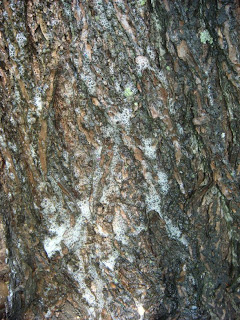Evergreens in Winter
 |
| White pine covered with snow |
By Rebecca Roy, Conservation Education Coordinator
We received a foot of beautiful snow this week, reminding us
why we love winter in Vermont. The snow
coated the rolling hills and valleys, clinging to evergreen branches with
festive white icing. This made these special trees stand out.
I saw some beautiful evergreen trees at Allis State Park
when I dug out my cross-country skis and glided my way up to the stone picnic
shelter for some hot chocolate and cookies. Like other woods in central
Vermont, Allis has deciduous and evergreen trees growing together. All our
deciduous trees—maples, ash, beech, and oak among other broad leaf trees,
turned brilliant colors and dropped their leaves in October. Meanwhile our
hardy evergreen trees continue to be green all year long.
The evergreens growing in Vermont are also called conifers,
because they grow seeds in cones. People also call them softwood trees because
their wood is, well, soft. They have lots of names because they are special
trees.
Evergreens can grow under harsh conditions, such as rocky
mountaintops, because they make food through photosynthesis with their waxy
needles every month of the year. Instead of spending lots of energy growing
huge leaves every year only to lose them in the fall, our evergreens steadily
make energy to grow year-round. Evergreens lose their needles, but lose them
slowly over time and always maintaining enough green needles to
photosynthesize.
Our most common conifers are white pine, red spruce, balsam
fir, and eastern hemlock. We proudly grow other beautiful evergreen trees too,
but those are the ones seen the most. All these trees serve a special purpose
in winter, they provide important habitat for wildlife.
Because conifers hold snow, and shed snow away from
themselves, the space beneath the trees has less snow depth. Hemlocks do this
very well, and a grove of hemlock trees is an essential winter habitat for many
animals, including white tailed deer. Deer gather under hemlocks in winter
because it is a shelter from the weather, and an easier place to dig for food
like fern root nodules. These habitats are so important that they are mapped by
wildlife biologists and foresters as important habitat called deer yards.
Conifers are wonderful windbreaks, and the thick bushy
branches provide safe places for tiny birds like Kinglets to spend winter
nights. The next time you are out on a winter adventure and you need to get
warm, duck under a conifer for protection. You can find beautiful ones in Allis
and other state parks all over Vermont.

.jpg)
.jpg)
Comments
Post a Comment
Feel free to let us know what you think.